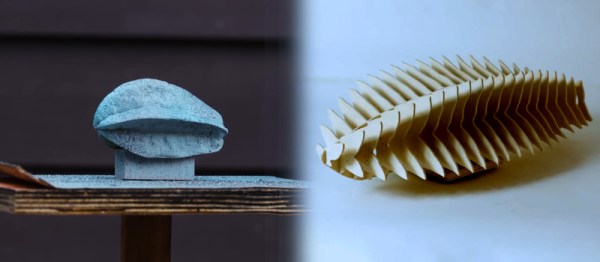[Frank Howarth] found himself in need of a lamp for his dining room. Being of the maker persuasion, store-bought simply wouldn’t do. With a serious wood shop at his disposal, [Frank] took a trip down to the supermarket for inspiration.
Having picked out a particularly well-formed starfruit for his project, [Frank] didn’t want to spend an inordinately long time attempting to recreate the organic lumps and bumps in modelling software, Instead, Meshroom was used to create a model through photogrammetry. After several failed attempts, success was achieved by using a textured rotating table as a background, with the starfruit painted in matte grey and a final dusting of black speckle. This gave the software enough visual cues to accurately model the fruit’s geometry.
With a 3D model to hand, Fusion Slicer was then used to generate a model that could be constructed out of flat lasercut pieces. The cutting outlines were then generated and passed to Rhino for final tweaking. With everything ready, parts were cut out of plywood and a small mockup of a potential lamp design was created. [Frank] is currently workshopping the design with the inhabitants of the dining room, prior to the final build.
Photogrammetry and modern CAD tools make working with natural forms quick and easy. We’ve also seen the technology used for other purposes too, with [Eric Strebel] providing a great example on how to use it for reverse engineering.
The starfruit tag on Hackaday is pretty sparse, so if you’ve got a project, let us know. Video after the break.










